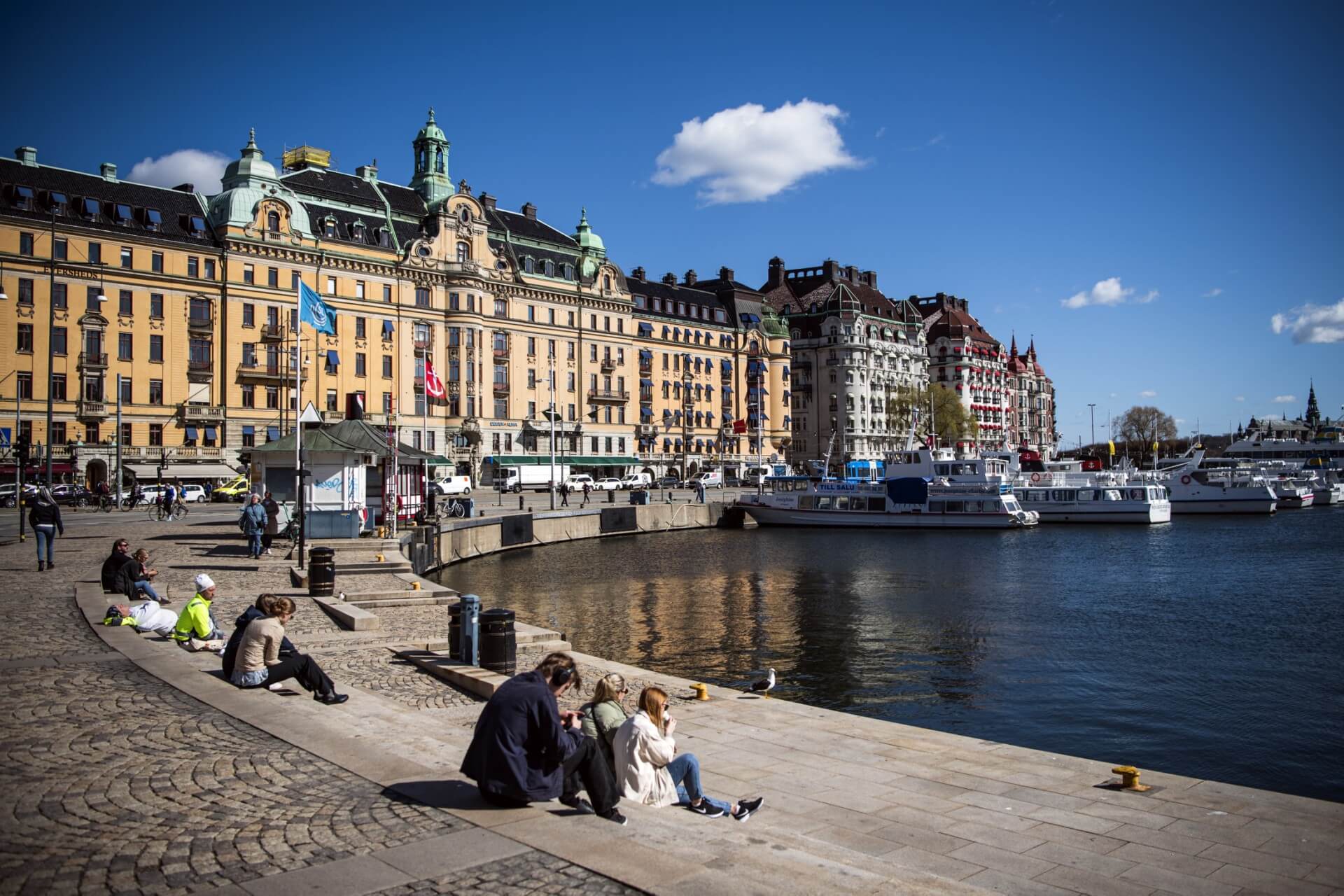5 best Scandinavian countries for elite yet affordable education
5 best Scandinavian countries for elite yet affordable education Study International News


The Best Scandinavian Countries for Affordable Education
The UK, US, Australia, and Canada may be famous study-abroad destinations, but if you look to the north, you might find the best Scandinavian countries for the perfect blend of education and experience.
Don’t believe us? Consider these stats:
- Sweden has 26 universities featured in the QS World University Rankings for 2023.
- Denmark has internationally recognized and high-quality courses.
- Finland is the #1 happiest country in the world for six years in a row.
- Norway provides free education to all international students.
- Iceland offers world-class education at affordable prices.

The best Scandinavian countries are home to some of the most learned people in the world, including 57 Nobel Prize winners. Source: AFP
The Best Scandinavian Countries are Great for Budget-Strapped Students
Anyone who has paid US$12 for a beer (and this was back in 2019) in Oslo or US$6 for a latte in Copenhagen (the priciest in the world) would think it’s a contradiction to say studying in the best Scandinavian countries is a cost-saving affair.
But compare them to the likes of the US, UK, Australia, and Canada, and you’ll see how it’s possible to pay so much less for a university degree.
Public universities in these countries often offer tuition-free or low tuition to international students. This not only reduces the financial burden on students but also allows them to access education that might have been out of their reach.
The best part is this low tuition rates are paired with some of the highest standards of living in the world. Public services are efficient public services. It’s safe to be anywhere at any time. There are healthcare and social welfare systems for the sick and vulnerable.
Little surprises then that the best Scandinavian countries consistently perform well in global surveys. This includes the QS World University Rankings for 2023. As many as 26 universities from the Nordic region were featured — Finland has nine, Sweden has eight, Denmark has five, and Norway has four.
These figures are notably smaller compared to countries like the UK and the US. However, this is due to the fact that the Scandinavian countries are significantly smaller in size and have fewer universities.
In fact, when you consider the combined population of Sweden, Norway, Denmark, Iceland, and Finland – approximately 26 million – it’s less than half the population of the UK, which is around 67 million and nowhere close to the US, which is about 331 million.
5 Scandinavian Countries with Prestigious and Affordable Universities for Students
1. Sweden
The education system in Sweden is designed to equip you with the practical skills necessary to ensure you are more employable once you graduate. Studying in Sweden is not the most affordable due to the high cost of living, which could go up as high as 8,824.05 Swedish Krona per month (1 Krona is approximately US$0.091 at the time of writing) – and that’s excluding rent and tuition fees. Your cost of living and tuition fees varies depending on the city and university you choose to study in. For example, if you choose to stay in Stockholm, you can expect to pay around 6,518 Krona for rent and around 18,6247 Krona for tuition fees at universities in the city. The good news is that Sweden has several tuition-free universities that are free for students from the European Economic Area (EEA) and European Union (EU) and those with a permanent Swedish residence permit. In comparison, international students outside of those countries will pay around US$9,000 to US$17,000. Linköping University — ranked within the top 200 global universities for disciplines like education, electrical and electronic engineering, materials science, and sociology — charges 900 krona for standard application fees, with tuition fees ranging from 80,000 to 136,000 krona if you are not from the EU, EEA, or Switzerland.

Did you know that LEGO was invented in Denmark, one of the best Scandinavian countries for international students? Source: AFP
2. Denmark
From a design-savvy capital to revitalized smaller cities, Denmark is no longer a sleepy Scandinavian country for the traveler in search of culture, food, and history. The country is now a must-go destination for tourists, and with the rise of
SDGs, Targets, and Indicators Analysis
1. Which SDGs are addressed or connected to the issues highlighted in the article?
- SDG 4: Quality Education
- SDG 8: Decent Work and Economic Growth
- SDG 10: Reduced Inequalities
- SDG 11: Sustainable Cities and Communities
- SDG 16: Peace, Justice, and Strong Institutions
The article discusses the affordability and accessibility of education in Scandinavian countries, which aligns with SDG 4 on Quality Education. It also mentions the high standards of living, efficient public services, and healthcare systems in these countries, which relate to SDG 11 on Sustainable Cities and Communities. The article also highlights the potential for higher income and employment opportunities for graduates, connecting to SDG 8 on Decent Work and Economic Growth. Additionally, the mention of scholarships and free education for international students reflects efforts towards reducing inequalities (SDG 10) and promoting peace and justice (SDG 16).
2. What specific targets under those SDGs can be identified based on the article’s content?
- SDG 4.3: By 2030, ensure equal access for all women and men to affordable and quality technical, vocational, and tertiary education, including university.
- SDG 8.5: By 2030, achieve full and productive employment and decent work for all women and men, including for young people and persons with disabilities, and equal pay for work of equal value.
- SDG 10.3: Ensure equal opportunity and reduce inequalities of outcome, including by eliminating discriminatory laws, policies, and practices and promoting appropriate legislation, policies, and action in this regard.
- SDG 11.1: By 2030, ensure access for all to adequate, safe, and affordable housing and basic services and upgrade slums.
- SDG 16.3: Promote the rule of law at the national and international levels and ensure equal access to justice for all.
Based on the article’s content, the targets mentioned above can be identified. The focus is on ensuring equal access to affordable and quality education (SDG 4.3), promoting full and productive employment (SDG 8.5), reducing inequalities (SDG 10.3), providing adequate housing and basic services (SDG 11.1), and promoting the rule of law and equal access to justice (SDG 16.3).
3. Are there any indicators mentioned or implied in the article that can be used to measure progress towards the identified targets?
- Percentage of international students enrolled in tuition-free or low-tuition universities
- Average cost of living for international students in Scandinavian countries
- Number of scholarships available for international students
- Employment rates and average income of graduates from Scandinavian universities
- Access to public services, healthcare, and social welfare systems
The article mentions indicators that can be used to measure progress towards the identified targets. These indicators include the percentage of international students enrolled in tuition-free or low-tuition universities, the average cost of living for international students in Scandinavian countries, the number of scholarships available for international students, employment rates and average income of graduates from Scandinavian universities, and access to public services, healthcare, and social welfare systems.
Table: SDGs, Targets, and Indicators
| SDGs | Targets | Indicators |
|---|---|---|
| SDG 4: Quality Education | 4.3: By 2030, ensure equal access for all women and men to affordable and quality technical, vocational, and tertiary education, including university. | – Percentage of international students enrolled in tuition-free or low-tuition universities – Average cost of living for international students in Scandinavian countries |
| SDG 8: Decent Work and Economic Growth | 8.5: By 2030, achieve full and productive employment and decent work for all women and men, including for young people and persons with disabilities, and equal pay for work of equal value. | – Employment rates and average income of graduates from Scandinavian universities |
| SDG 10: Reduced Inequalities | 10.3: Ensure equal opportunity and reduce inequalities of outcome, including by eliminating discriminatory laws, policies, and practices and promoting appropriate legislation, policies, and action in this regard. | – Number of scholarships available for international students |
| SDG 11: Sustainable Cities and Communities | 11.1: By 2030, ensure access for all to adequate, safe, and affordable housing and basic services and upgrade slums. | – Access to public services, healthcare, and social welfare systems |
| SDG 16: Peace, Justice, and Strong Institutions | 16.3: Promote the rule of law at the national and international levels and ensure equal access to justice for all. | – Access to justice for international students |
Behold! This splendid article springs forth from the wellspring of knowledge, shaped by a wondrous proprietary AI technology that delved into a vast ocean of data, illuminating the path towards the Sustainable Development Goals. Remember that all rights are reserved by SDG Investors LLC, empowering us to champion progress together.
Source: studyinternational.com

Join us, as fellow seekers of change, on a transformative journey at https://sdgtalks.ai/welcome, where you can become a member and actively contribute to shaping a brighter future.







